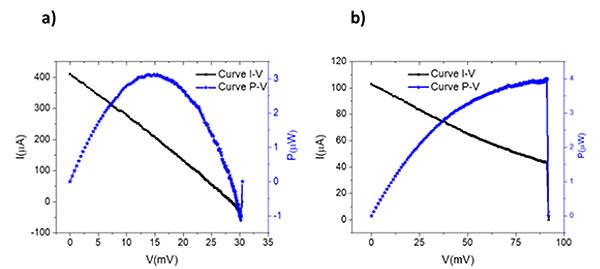In SPIE Journal of Nanophotonics, researchers demonstrate ability to generate three times more thermoelectric voltage and 1.3 times more efficiently than classic dipole nanoantennas with newly fabricated bimetalic nanoantenna

Credit: Javier Mendez-Lozoya et al.
BELLINGHAM, Washington, USA and CARDIFF, UK – In an article published in the SPIE Journal of Nanophotonics (JNP), researchers from a collaboration of three labs in Mexico demonstrate an innovative nanodevice for harvesting solar energy. The paper, “Thermoelectric efficiency optimization of nanoantennas for solar energy harvesting,” reports that evolutive dipole nanoantennas (EDNs) generate a thermoelectric voltage three times larger than the classic dipole nanoantenna (CDN).
Capturing visible and infrared radiation using nanodevices is an essential aspect of collecting solar energy: solar cells and solar panels are common devices that utilize nanoantennas, which link electromagnetic radiation to specific optical fields. The EDN antenna can be useful in many areas where high thermoelectric efficiency is needed from energy harvesting to applications across the aerospace industry.
“The paper reports on a novel design and demonstration of a nanoantenna for efficient thermoelectric energy harvesting,” says Professor Ibrahim Abdulhalim, JNP Associate Editor, SPIE Fellow and a professor in the Electrooptics and Photonics Engineering Department at Ben-Gurion University of the Negev. “They demonstrated thermoelectric voltage three times larger than a classical antenna. This type of antenna can be useful in many fields from harvesting of energy from waste heat, in sensing and solar thermal energy harvesting.”
The nanoantennas are bimetallic, using nickel and platinum, and were fabricated using e-beam lithography. The nanoantenna design was optimized using simulations to determine the distance between the elements. In comparing their thermoelectric voltage to the classic dipole nanoantenna, the EDNs were 1.3 times more efficient. The characterization was done using a solar simulator analyzing the I-V curves. The results indicate that EDN nanoantenna arrays would be good candidates for the harvesting of waste heat energy.
###
The article authors are Javier Mendez-Lozoya of Terahertz Science and Technology National Lab, Universidad Autonoma de San Luis Potosi, Mexico; Ramon Diaz de Leon-Zapata, of Tecnologico Nacional de Mexico, San Luis Potosi, Mexico; Edgar Guevara of Terahertz Science and Technology National Lab and Catedras CONACYT, Universidad Autonoma de San Luis Potosi, Mexico; Gabriel Gonzalez of Terahertz National Lab and Catedras CONACYT, Universidad Autonoma de San Luis Potosi, Mexico; and Francisco J. Gonzalez, of Terahertz Science and Technology National Lab, Universidad Autonoma de San Luis Potosi, Mexico.
Ali Adibi, an SPIE Fellow and Joseph M. Pettit Professor of Electronics at the Georgia Institute of Technology, is the editor-in-chief of the Journal of Nanophotonics. The journal is published in print and digitally by SPIE in the SPIE Digital Library, which contains more than 500,000 publications from SPIE journals, proceedings, and books, with approximately 18,000 new research papers added each year.
About SPIE
SPIE is the international society for optics and photonics, an educational not-for-profit organization founded in 1955 to advance light-based science, engineering, and technology. The Society serves 257,000 constituents from 173 countries, offering conferences and their published proceedings, continuing education, books, journals, and the SPIE Digital Library. In 2018, SPIE provided more than $4 million in community support including scholarships and awards, outreach and advocacy programs, travel grants, public policy, and educational resources. http://www.
Contact:
Daneet Steffens
Public Relations Manager
[email protected]
+1 360 685 5478
@SPIEtweets
Media Contact
Daneet Steffens
[email protected]
Original Source
http://spie.
Related Journal Article
http://dx.



